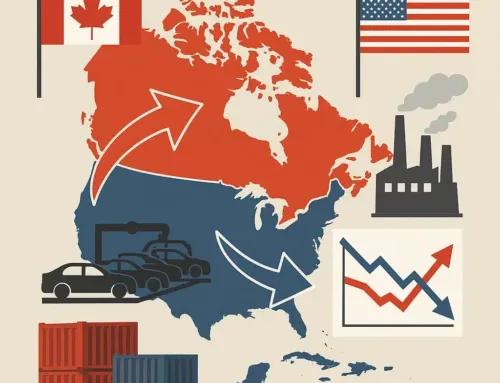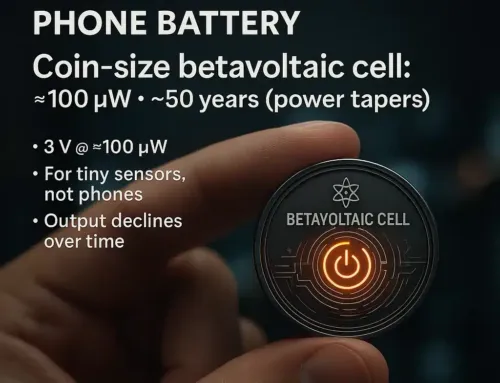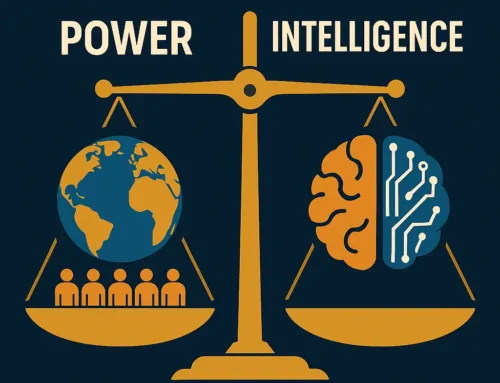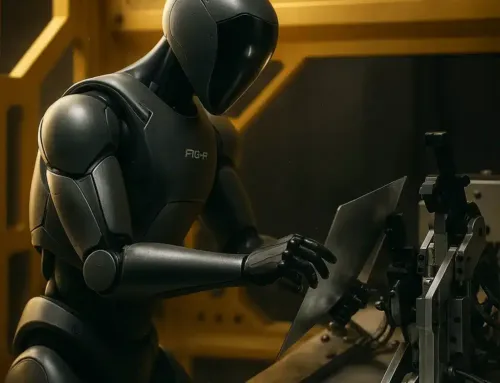
Approx. read time: 15 min.
Post: Goodbye to Trust in Elon Musk: The Self-Driving Tesla That Crashed a Dummy Child—and the Real Safety Crisis Behind It
Goodbye to Trust in Elon Musk: The Self-Driving Tesla That Crashed a Dummy Child—and the Real Safety Crisis Behind It
On a warm day in Austin, Texas, a Tesla Model Y approached a stopped school bus. Red lights flashing. Schoolchildren (or so the law assumes) disembarking. The Tesla, however, didn’t stop. It cruised past, rolled through the red signals—and struck a small figure crossing the street.
It wasn’t a real child. It was a mannequin, deliberately placed by safety advocacy group The Dawn Project to simulate a child pedestrian.
But the message was clear: if Tesla’s Full Self-Driving (FSD) system can’t even stop for a school bus or avoid a child-sized obstacle, can it be trusted on real roads with real lives at stake?
The footage from the test is chilling. And once again, it’s Elon Musk and Tesla, not for the first time, facing a wave of backlash—this time for a video that many say proves just how dangerous Tesla’s so-called “Autopilot” and “Full Self-Driving” features remain.
A Car, A Child Dummy, and a Dangerous Signal
The video, posted by The Dawn Project and quickly circulated on social media, shows a Model Y operating with Tesla’s FSD (Supervised) software, version 13.2.9. The car fails to stop for a school bus—a blatant violation of traffic laws in every U.S. state. Worse still, it then proceeds to mow down a child-sized dummy crossing the street.
The vehicle’s computer system had reportedly recognized the obstacle. Still, no evasive action was taken. It didn’t swerve. It didn’t brake. It just kept going.
That moment, according to Dan O’Dowd, founder of The Dawn Project, encapsulates what’s wrong with Tesla’s current strategy. “The software sees the child, but doesn’t care,” he said. “It’s as if someone disabled the part of its brain that’s supposed to prioritize life over speed or convenience.”
O’Dowd, a software entrepreneur and long-time Tesla critic, created The Dawn Project to campaign for safer autonomous software and has accused Tesla of deploying untested, dangerous systems onto public roads. His argument is simple: Tesla’s Full Self-Driving is not full, nor is it safe.
Autopilot, FSD, and the Language Problem: Selling Autonomy Without Responsibility
Tesla’s branding around autonomy has been a masterclass in marketing—and a case study in public safety risk.
At the heart of the controversy is the misleading language used by Tesla to describe its driver-assistance systems. The names “Autopilot” and “Full Self-Driving” suggest capabilities far beyond what the systems actually deliver. That linguistic gap—between what people think they’re buying and what they’re really getting—isn’t just semantics. It’s a potential life-or-death distinction.
Autopilot: A Name That Overpromises
Tesla’s Autopilot system is classified as a Level 2 driver assistance feature by the SAE (Society of Automotive Engineers). This means the car can control steering, speed, and lane-keeping—but only with constant driver oversight. Drivers are required to keep their hands on the wheel and their eyes on the road at all times.
Yet the word Autopilot—borrowed from aviation—implies something more. In aircraft, autopilot systems do allow for largely autonomous cruising under specific conditions, but even those systems are used under tight human supervision. Tesla’s use of the term creates a false sense of security, leading some drivers to treat the car as self-driving when it’s not.
Videos of Tesla owners sleeping, reading, or even sitting in the passenger seat while Autopilot is active have surfaced repeatedly online. Tragically, some of those stunts ended in fatal crashes.
Full Self-Driving: Not What It Says on the Tin
Then there’s Full Self-Driving (FSD)—a $12,000 software package that sounds like it would transform your Tesla into a fully autonomous vehicle. It doesn’t.
As of 2025, FSD is still a Level 2 system, just like Autopilot. It can do more—like navigating on city streets, recognizing traffic lights and stop signs, and handling turns—but it still requires active driver monitoring. It is not legally or technically self-driving.
Tesla’s own fine print confirms this, but that’s buried in disclaimers, not in the public imagination.
And it’s not surprising why. Elon Musk has repeatedly said things that suggest otherwise. In 2019, he famously declared that Tesla would have “a million robotaxis on the road” by 2020. In 2021, he claimed FSD would surpass human driving that same year. In 2022, he said Tesla was “very close to full autonomy.” And in 2024, he teased that FSD would soon become “hands-free in most scenarios.”
None of these predictions have come true.
What has happened is that Tesla owners—encouraged by Musk’s enthusiasm—have started treating FSD-equipped cars as if they’re autonomous. This false confidence sets the stage for disaster.
The Blurred Line Between Assistant and Autonomy
The result of Tesla’s branding strategy is a widespread confusion: some drivers assume the car is more capable than it is, while others trust it to make decisions it can’t yet handle. And when a crash occurs, that confusion becomes a legal and ethical fog.
Who’s responsible when a Tesla on FSD mode fails to stop for a pedestrian? Is it the driver who was told to supervise—but also sold a product called “Full Self-Driving”? Is it Tesla for marketing the system with aspirational language? Or is it Musk himself, whose bold promises keep outrunning technical reality?
This ambiguity isn’t just a legal grey area—it’s a design flaw built into the entire Tesla experience.
The interface and behavior of the car often encourage disengagement. The wheel torque detection system, used to monitor driver attention, can be tricked with weights or steering wheel jostling. And the interface shows FSD handling turns, merging into traffic, and even parking—things that look autonomous, but still require human judgment.
No warning popup can fully override the powerful illusion created by the name “Full Self-Driving.”
The Regulatory Gap: Why Hasn’t This Been Fixed?
One of the reasons Tesla has been able to walk this tightrope is the lack of federal regulation around autonomous terminology.
In the U.S., there is no legal definition for terms like “Autopilot” or “Full Self-Driving.” While the SAE has established a six-level framework for autonomy (from Level 0 to Level 5), carmakers are free to label their features however they want—as long as there’s a disclaimer somewhere in the documentation.
This regulatory vacuum allows Tesla to market FSD with bold claims on stage, while quietly disclaiming liability in the owner’s manual. The inconsistency is deliberate—and lucrative.
A Safety Issue Disguised as a Branding Problem
What seems like a branding issue is, in reality, a public safety issue. A 2022 study by the Insurance Institute for Highway Safety (IIHS) found that many drivers misunderstood the limitations of driver-assist systems—particularly those with misleading names. Tesla drivers scored among the lowest in understanding when compared to users of GM’s Super Cruise or Ford’s BlueCruise.
This confusion has real consequences. It leads to over-reliance on unfinished software, complacency at the wheel, and ultimately, avoidable injuries and fatalities.
By calling something “Full Self-Driving” before it’s truly autonomous, Tesla is not just overhyping a feature—it’s manufacturing risk.
A Pattern of Crashes and Coverups
The Austin dummy crash is not an isolated incident.
In 2023, a 17-year-old student in North Carolina was hit by a Tesla Model Y while stepping off a school bus. The NHTSA investigated, revealing that the vehicle was in Autopilot mode at the time. Although the driver had reportedly tricked the steering wheel sensor to fake hand engagement, the crash underscored a larger issue: Tesla’s safety mechanisms are easily manipulated—and frequently misunderstood.
In fact, according to NHTSA data published in 2024, Tesla vehicles operating on Autopilot or FSD were involved in at least 13 fatal crashes over the span of two years. Many of those incidents involved basic driving situations: turns, red lights, pedestrians. [Source: Wired]
Tesla has consistently blamed human error or driver misuse. But that only reinforces what critics argue is the core problem: if your technology can be so easily misused, maybe it’s not ready for public roads.
Vision-Only vs. Sensor Fusion: Why Tesla’s Approach Is Riskier
One of the central technical criticisms of Tesla’s approach is its refusal to adopt LiDAR.
While competitors like Waymo and Cruise use “sensor fusion” — combining cameras, radar, and LiDAR for redundancy — Tesla relies exclusively on vision-based AI, using cameras and machine learning to interpret surroundings.
Elon Musk has called LiDAR “a crutch” and “a fool’s errand,” arguing that humans drive with eyes, not lasers. But Dan O’Dowd and others argue that’s a reckless oversimplification.
“Human eyes are connected to a brain evolved over millions of years to make split-second judgments,” said O’Dowd. “Tesla’s software is a few years old and makes decisions like a distracted toddler.”
Waymo’s system, by contrast, has logged over 10 million fully autonomous rides in cities like San Francisco and Phoenix—with no human driver and virtually no major accidents. [Source: Business Insider]
The contrast is stark: while Tesla deploys beta software to average consumers, Waymo limits deployment to thoroughly tested, highly controlled environments with multiple layers of redundancy.
Elon Musk’s Vision: Genius or Liability?
Elon Musk has always operated on the edge of ambition and chaos. It’s part of what made him a visionary—and part of what now threatens Tesla’s reputation.
At a shareholder meeting in early 2025, Musk said Tesla’s robotaxi fleet would launch within a year. That announcement came just weeks after the dummy crash in Austin.
When asked about safety, Musk shrugged off concerns, stating that “the data will speak for itself” and that FSD would eventually “outperform human drivers by an order of magnitude.”
But that “eventually” is the problem.
Musk wants to be first. He wants to revolutionize mobility, just like he did with rockets, electric vehicles, and (to some extent) AI. But critics argue he’s sacrificing safety for speed, and that Tesla is being used as a live testing ground for software that’s not remotely ready.
Regulatory Warnings Are Mounting
The U.S. Department of Transportation has opened multiple investigations into Tesla’s driver-assist features, including Autopilot, following fatal crashes and dozens of complaints.
In 2023, the NHTSA forced Tesla to issue a recall affecting over 2 million vehicles to improve the way Autopilot detects whether drivers are paying attention. [Source: The Verge]
This year, members of Congress called for stricter regulations on autonomous testing, with some suggesting that companies like Tesla should be banned from deploying features still classified as beta software.
Even consumer safety groups like Consumer Reports have advised against trusting Tesla’s Full Self-Driving features, ranking them below GM’s Super Cruise and Ford’s BlueCruise in driver-assist safety.
The Dawn Project: A Thorn in Tesla’s Side
Dan O’Dowd isn’t just a critic—he’s an engineer with credibility, a CEO with money, and a Tesla owner with a mission. As the founder of The Dawn Project, O’Dowd has become one of the most persistent thorns in Elon Musk’s side, relentlessly calling out what he sees as catastrophic flaws in Tesla’s Full Self-Driving software.
O’Dowd isn’t arguing from ignorance. He built his career in high-stakes software—his company, Green Hills Software, supplies operating systems for aircraft, satellites, and military hardware. When he says Tesla’s code is unsafe, he’s not talking from the outside looking in. He’s comparing it to software that already meets life-or-death reliability standards.
The Dawn Project was born from one core belief: unsafe code on public roads is a form of negligence. And Tesla, in O’Dowd’s view, is not just careless—it’s reckless.
He’s spent millions of dollars running attack ads during prime-time television, including the Super Bowl, warning viewers that FSD is “the most dangerous software ever deployed.” His team has recreated test scenarios where Tesla vehicles plow through children-sized mannequins, ignore traffic signs, or crash into objects other systems would have avoided.
Tesla fans accuse O’Dowd of being obsessed, even vindictive. Some have called him a “disruptor-for-hire” or painted his crusade as a PR stunt.
But the video footage he’s produced tells a different story. It’s not CGI. It’s not hypothetical. It’s a Tesla Model Y equipped with the latest FSD software barreling straight into a child-sized dummy—without even attempting to brake.
No matter what you think of O’Dowd, that visual is hard to ignore.
So, Is It Safe to Ride in a Self-Driving Tesla?
The answer depends on your definition of “safe”—and your faith in the system behind the wheel.
Tesla’s FSD, when used by a vigilant and alert driver, can perform impressive maneuvers: merging onto highways, navigating city intersections, even executing unprotected left turns. But the technology is not foolproof, and it doesn’t react like a cautious human would. It reacts like software still learning in real time.
That’s a massive risk.
The core problem isn’t that FSD is dangerous in every moment—it’s that people treat it like it’s safe in every moment. The system’s branding creates the illusion of control, which encourages inattention, misuse, and even outright abuse. And Tesla hasn’t done nearly enough to counteract that illusion.
You can’t call something “Full Self-Driving” and then blame the driver when it fails. That’s not accountability—that’s gaslighting.
Drivers trust the brand, the name, and Musk’s optimism more than they should. And in a car, trust isn’t a branding metric—it’s a survival mechanism. Misplaced trust, like that shown by the child dummy test, is more than a liability. It’s a design failure. A fatal one.
The Bigger Picture: Autonomous Vehicles Are Coming—But How?
No one is stopping the future. Autonomous vehicles are on the way, whether we’re ready or not.
Waymo is already running fully driverless robotaxis in parts of Phoenix and San Francisco, with over 10 million autonomous miles logged. Cruise, Zoox, and even Apple are pushing aggressively into the same space, all with multimodal sensor systems, rigorous testing protocols, and strict safety guardrails.
Tesla’s approach is radically different: release early, iterate constantly, and let the real world be your lab.
In many industries, this model works. In software, in rockets, even in phones—it’s how innovation happens. But on roads shared with children, cyclists, and unsuspecting drivers, the margin for error vanishes. You can’t patch a fatality.
Tesla’s real competitive advantage isn’t its tech—it’s its scale. With millions of cars already on the road, it can roll out software updates overnight. It has more driving data than any other company on Earth. That reach is powerful. But that also means every misstep gets amplified.
And so far, Tesla has chosen to chase the promise of autonomy without delivering the responsibility that should come with it. As other players move slowly, deliberately, and with regulatory cooperation, Tesla continues to run ahead—and sometimes off the rails.
Final Word: A Crisis of Leadership—and a Failure of Conscience
The video of a Tesla Model Y hitting a mannequin may not show a real child being harmed—but it might as well have. The vehicle didn’t hesitate. It didn’t stop. It didn’t even register the gravity of the moment. That’s not just a software glitch. That’s a systemic failure in how Tesla approaches safety, responsibility, and human life.
Elon Musk wants to lead the world into a future of driverless cars. But leadership isn’t just about being the loudest voice in the room or the first to launch. It’s about knowing when to stop, when to listen, and when to put safety above ambition. And right now, Tesla is burning through public trust at the same speed it pushes out unproven software updates.
You can’t release beta software that mishandles basic traffic rules—school bus stops, pedestrian crossings, children in the road—and then shift the blame when people get hurt. You can’t market a product as “Full Self-Driving,” while burying disclaimers that say it still requires full driver supervision. That’s not innovation. That’s misdirection.
And I say this not just as a writer or observer—I say it with the weight of 20 years of firsthand experience in the auto industry. I’ve seen this playbook before. Behind closed doors, safety decisions often come down to numbers, not ethics. I’ve sat in rooms where executives coldly calculated that settling wrongful death lawsuits would cost less than issuing a full-scale recall. I’ve watched corporations choose profit over life, time and again.
Tesla isn’t the first company to gamble with lives for market dominance—but it may be the most brazen. The difference is that Tesla isn’t just making cars. It’s making promises. About autonomy. About safety. About the future. And when those promises prove hollow, it’s not just a technical failure. It’s a betrayal.
Being first doesn’t make you right. Being visionary doesn’t make you virtuous. And when innovation ignores consequences, it stops being progress—it becomes negligence on a global scale.
Until Tesla rethinks its strategy—until it treats safety as the foundation, not the afterthought—the world has every right to ask:
Is this the future we were promised?
Or is it a slow-motion tragedy already in progress?
Related Videos:
Related Posts:
The Serendipitous Crash: How My Epic Tech Blunder Became My Greatest Triumph
Revolutionizing Autonomy: Introducing a Next-Generation Algorithm for Autopilot Cars
Tesla Autopilot stopped for a rabbit on the road
Tesla Revives Coveted FSD Transfer Offer with New Terms: A Surprise Update









